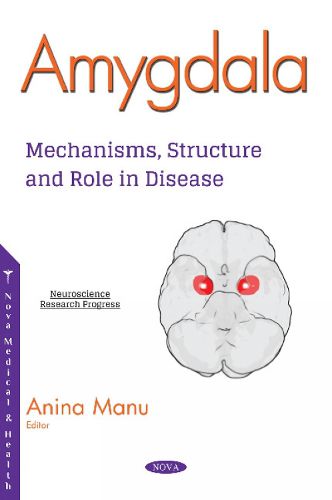Readings Newsletter
Become a Readings Member to make your shopping experience even easier.
Sign in or sign up for free!
You’re not far away from qualifying for FREE standard shipping within Australia
You’ve qualified for FREE standard shipping within Australia
The cart is loading…






Resilience is a construct that involves different responses of living animals to withstand challenges in the internal milieu and/or from the environment. In Amygdala: Mechanisms, Structure and Role in Disease, the authors analyze the concept of resilience and its occurrence, as well as introduce the terms homeoresilience and alloresilience for the modulatory responses evoked by stimuli of different types and intensities. These new concepts include the mechanisms that allow organic variables to return to homeostatic values or to be set over or below normal ranges of functioning. Following this, the authors suggest that wth a greater understanding of the structure and organization of the basal nucleus and its circuits, it may be possible to better localize specific functions that are impaired in psychiatric disorders associated with amygdala activity. In nonhuman and human primates, salience detection, social monitoring, and visually updating behavioral cues are some of the broader functions involving the basal nucleus along with neural networks that are engaged with the basal nucleus. Additionally, the central amygdala plays an integrative role in autonomic functions related to pain, and receives input from the outer layers of the trigeminal nucleus caudalis via the lateral parabrachial nucleus. A recent study showed that neurons in lateral parabrachial nucleus are activated more strongly by noxious stimulation of the face than of the hindpaw.
$9.00 standard shipping within Australia
FREE standard shipping within Australia for orders over $100.00
Express & International shipping calculated at checkout
Resilience is a construct that involves different responses of living animals to withstand challenges in the internal milieu and/or from the environment. In Amygdala: Mechanisms, Structure and Role in Disease, the authors analyze the concept of resilience and its occurrence, as well as introduce the terms homeoresilience and alloresilience for the modulatory responses evoked by stimuli of different types and intensities. These new concepts include the mechanisms that allow organic variables to return to homeostatic values or to be set over or below normal ranges of functioning. Following this, the authors suggest that wth a greater understanding of the structure and organization of the basal nucleus and its circuits, it may be possible to better localize specific functions that are impaired in psychiatric disorders associated with amygdala activity. In nonhuman and human primates, salience detection, social monitoring, and visually updating behavioral cues are some of the broader functions involving the basal nucleus along with neural networks that are engaged with the basal nucleus. Additionally, the central amygdala plays an integrative role in autonomic functions related to pain, and receives input from the outer layers of the trigeminal nucleus caudalis via the lateral parabrachial nucleus. A recent study showed that neurons in lateral parabrachial nucleus are activated more strongly by noxious stimulation of the face than of the hindpaw.